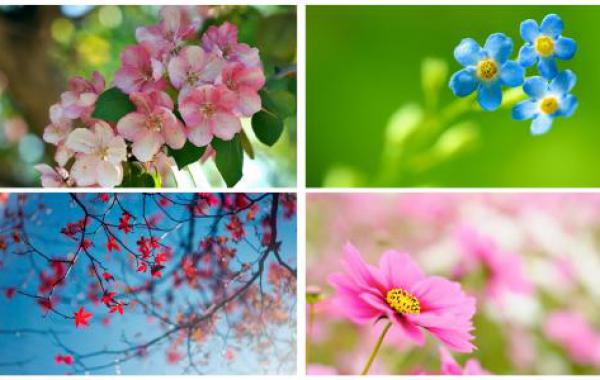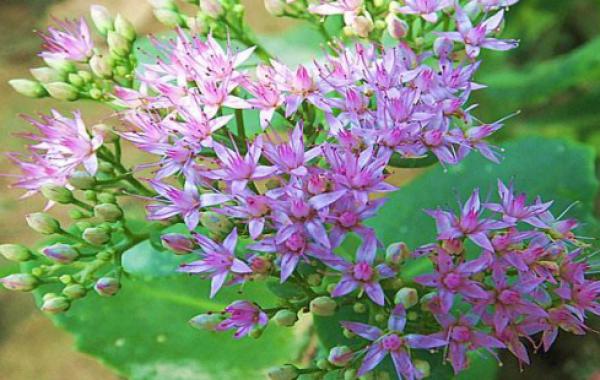What is the wonderful way to prevent the occurrence of powdery mildew in flower seedlings?

What is the wonderful way to prevent the occurrence of powdery mildew in flower seedlings.
To prevent the disease of flowers and trees in the greenhouse, before planting seedlings in the greenhouse, thoroughly remove all plants in the greenhouse, clean the shed, and strictly disinfect by means of drug fumigation. Strictly prevent sick seedlings from entering the house, plant a single variety of flowers and trees as far as possible in the shed, avoid mixed planting, in order to prevent cross-infection. Before the flowers and trees sprout in the open field in early spring, the diseased plants in the shed can be completely destroyed before the shed can be opened to prevent the spores from spreading outside the shed.
The branches were sprayed with the diluent of Baume 3-5 degree stone sulfur mixture for the prevention and control of overwintering. Melon, leaf, chrysanthemum and other vulnerable flowers can not be applied, the ground spray sulfur powder, generally every 70 square meters use 25 grams 30 grams, eliminate the source of overwintering bacteria.
During the growing period, protective agents can be sprayed before the disease, and internal inhalers should be sprayed after the onset of the disease. According to the symptoms of the disease, the growth of flowers and trees, the climate and the characteristics of pesticides, the pesticide was applied once every 5 to 20 days, and continuously for 5 times. Flowers and trees in a season, a kind of internal inhaler can only be applied once or twice, and the types of pesticides should be changed frequently to avoid drug resistance of bacteria.
The frequently used protective agents are: 50% sulfur suspension 500 times 800 times solution, 45% stone sulfur mixture crystallization 300 times solution, 50% carbendazim wettable powder 800 times solution, 75% chlorothalonil 500 times solution, 70% mancozeb 400 times solution.
The internal inhalers are: 50% carbendazim 500-fold solution and 75% methyl thiophanate 1000-fold solution. When the disease is prevalent, 15% trimethoprim can be sprayed 1000 times.
Antibiotics are: 2% antimycin water agent 200 times liquid, 10% multi-antimycin (Baolian) 1000-1500 times liquid.
Other drugs include 500 times the solution of baking soda, which can be sprayed once every 3 days in the early stage of the disease. In addition, 1000 times liquor (35% alcohol content) can be used, spray once every 3-6 days, spray 3-6 times continuously, and wash the leaves until there is no white powder.
The flowers and trees planted in protected areas such as greenhouses and greenhouses can be sprayed with fumigants and dust agents in addition to the above-mentioned chemicals. Empty shed disinfection should be carried out before or after planting. 250 grams of sulfur powder and 500 grams of sawdust are used for every 100 square meters, evenly mixed, divided into 10 piles, lit with red-hot briquettes or charcoal, can not be burned with open fire, and close the shed for one day and night. In the process of fumigation, we should strictly guard against fire. Smoking during the growing period of flowers and trees is prone to drug damage, so it should be used with caution. During the plant growing period, use 45% chlorothalonil smoke remover 25 grams or spray 5% per 67 square meters before the disease.
100 grams of chlorothalonil powder per 67 square meters
In production practice, there are mainly the following methods to prevent and cure powdery mildew.
There are significant differences in resistance to powdery mildew among different varieties with mild disease or disease resistance. Planting varieties with mild disease or strong disease resistance is the most economical and effective way to control powdery mildew.
When purchasing seedlings, we should select disease-free plants and strictly eliminate infected plants and put an end to the source of disease. When propagating, cuttings or root tillers without disease and insect pests should be cut as asexual reproduction materials. When the seedlings come out of the nursery, pesticide control should be carried out to strictly prevent diseased seedlings from being introduced into the new area.
Rotation with non-host flowers and trees for 2 ~ 3 years to reduce the source of disease.
Strengthen cultivation and management during the overwintering period from late autumn to early spring of the following year, thoroughly clean the nursery, cut off the disease and insect branches and destroy them; remove the infected branches and leaves in time during the growth period, thoroughly remove the fallen leaves, cut off the disease and insect branches and over-dense branches in the middle and lower parts, and destroy them centrally; it is not suitable to plant too dense, and the greenhouse should strengthen ventilation and ventilation to reduce humidity. Timely exclusion of stagnant water in fields and flowerpots, watering should not be much, watering from the edge of the basin, do not make stems and leaves watered, reduce the spread of bacteria and disease opportunities; increase the application of phosphorus and potassium fertilizer, less nitrogen fertilizer, make the plant grow strong, apply more fully mature organic fertilizer, to enhance the disease resistance of the plant.
To prevent the disease of flowers and trees in the greenhouse, before raising seedlings in the greenhouse, thoroughly remove all plants in the greenhouse, clean the shed, and strictly disinfect by means of drug fumigation. Strictly prevent sick seedlings from entering the house, plant a single variety of flowers and trees as far as possible in the shed, avoid mixed planting, in order to prevent cross-infection. Before the flowers and trees sprout in the open field in early spring, the diseased plants in the shed can be completely destroyed before the shed can be opened to prevent the spores from spreading outside the shed.
During the overwintering period, the branches were sprayed with Baume 3-5 degrees diluent of stone-sulfur mixture. Melon, leaf, chrysanthemum and other vulnerable flowers can not be applied, the ground spray sulfur powder, generally every 70 square meters use 25 grams 30 grams, eliminate the source of overwintering bacteria.
During the growing period, protective agents can be sprayed before the disease, and internal inhalers should be sprayed after the onset of the disease. According to the symptoms of the disease, the growth of flowers and trees, the climate and the characteristics of pesticides, the pesticide was applied once every 5 to 20 days, and continuously for 5 times. Flowers and trees in a season, a kind of internal inhaler can only be applied once or twice, and the types of pesticides should be changed frequently to avoid drug resistance of bacteria.
The frequently used protective agents are: 50% sulfur suspension 500 times 800 times solution, 45% stone sulfur mixture crystallization 300 times solution, 50% carbendazim wettable powder 800 times solution, 75% chlorothalonil 500 times solution, 70% mancozeb 400 times solution.
The internal inhalers are: 50% carbendazim 500-fold solution and 75% methyl thiophanate 1000-fold solution. When the disease is prevalent, 15% trimethoprim can be sprayed 1000 times.
Antibiotics are: 2% antimycin water agent 200 times liquid, 10% multi-antimycin (Baolian) 1000-1500 times liquid.
Other drugs include 500 times the solution of baking soda, which can be sprayed once every 3 days in the early stage of the disease. In addition, 1000 times liquor (35% alcohol content) can be used, spray once every 3-6 days, spray 3-6 times continuously, and wash the leaves until there is no white powder.
The flowers and trees planted in protected areas such as greenhouses and greenhouses can be sprayed with fumigants and dust agents in addition to the above-mentioned chemicals. Empty shed disinfection should be carried out before or after planting. 250 grams of sulfur powder and 500 grams of sawdust are used for every 100 square meters, evenly mixed, divided into 10 piles, lit with red-hot briquettes or charcoal, can not be burned with open fire, and close the shed for one day and night. In the process of fumigation, we should strictly guard against fire. Smoking during the growing period of flowers and trees is prone to drug damage, so it should be used with caution. During the plant growing period, use 45% chlorothalonil smoke remover 25 grams per 67 square meters or spray 5% chlorothalonil dust powder 100 grams per 67 square meters.
Related
- What if the leaves of potted flowers turn yellow?
- Florescence Control of several Flowers
- Anti-freezing technology and post-freezing nursing technology of flowers
- What is the classification of flowers? What are the common methods of flower classification?
- Prevention and control of alkali and acid damage of flowers in courtyard
- Technology of Anti-freezing and restoring growth of Flower seedlings in greenhouse and greenhouse
- How does flower fertilization not hurt the root? Fertilization technology of flowers
- Key points of disinfection in flower greenhouse
- Several pesticides that are banned or used cautiously in flowers
- How to fertilize the flowers that watch the leaves?



